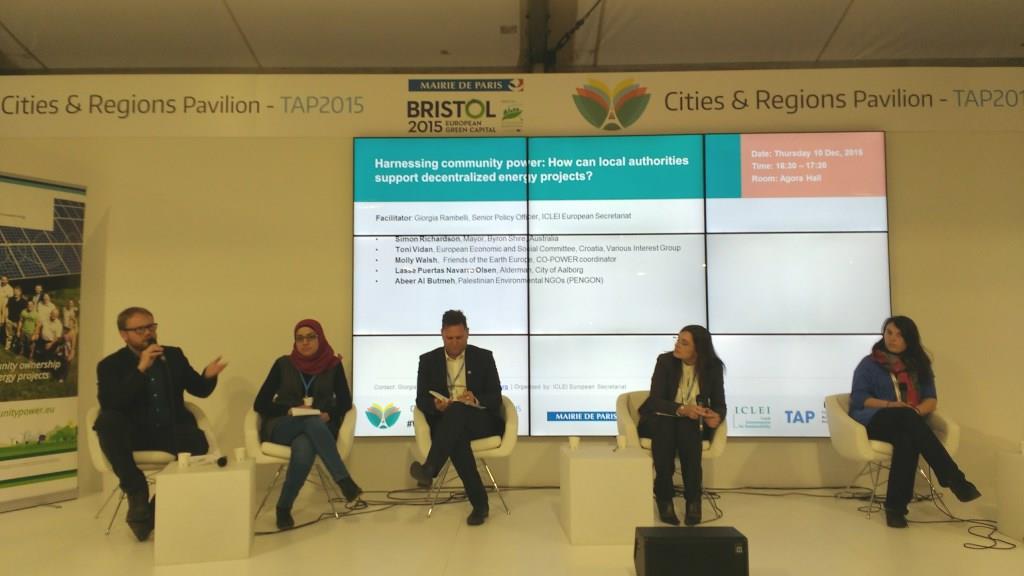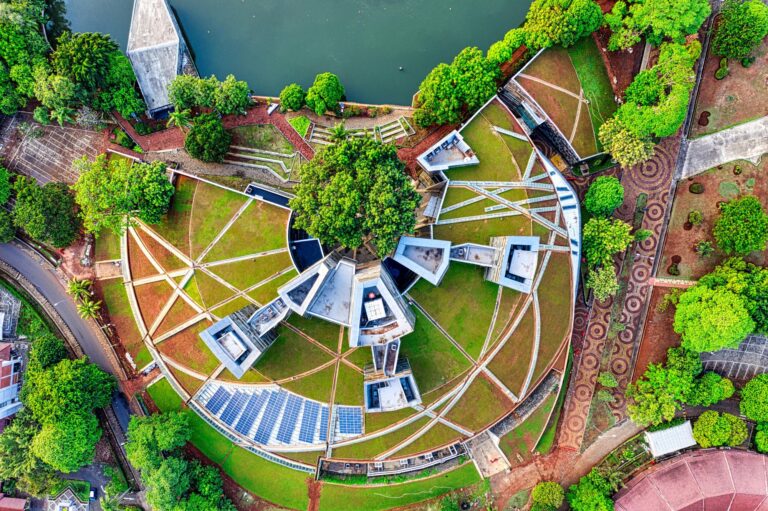ICLEI: The Future of Community Energy
ICLEI Europe hosted a session at the Cities & Regions Pavilion on 10 December. Entitled “Harnessing community power: how can local authorities support decentralized energy projects?”, the session allowed panellists from a wide range of countries and organizations to discuss the advantages of community energy and the barriers to its implementation and expansion.
Panellists began by considering the definition of community energy. At heart, community energy is about ensuring that a community is supplied with energy generated from renewable resources in an integrated fashion. Panellists agreed that ownership is the key principle, with Lasse stating that ownership matters not just in legal sense but an emotional one: people are more likely to care about their energy systems if they have a stake in them. The possibility of ownership can also help to overcome objections like those made to wind turbine on aesthetic grounds. The benefits of community energy, panellists said, must be retained locally and reinvested into the community.
What are the challenges to accelerating community energy? Toni Vidan, European Economic and Social Committee, Croatia, Various Interest Group said that the institutional frameworks of European member states are not developed to facilitate the process, so community initiatives are often fighting against larger structures. Simon Richardson, Mayor of Byron Shire, Australia explained that in Byron Shire, the energy model was one-way, from coal production to consumer. Lasse Puertas Navarro Olsen of Aalborg, Denmark described how, in Denmark, it is not possible to install solar panels on government buildings without paying a carbon tax, despite the fact that the energy is renewable. However, the barriers are not only national: while some local governments are very receptive to community energy initiatives, others are highly skeptical.
How can these challenges be overcome? Vidan suggested that when EU-wide policies for community energy are designed, they must take into account the huge differences in capacity for self-organization among communities. Richardson stated that local government can help to smooth out regulatory problems in the renewable energy sector, for instance by trialling programs for virtual net metering. He also explained that specific projects are easier to fund than plans or strategies, with communities able to trial initiatives for possible broader implementation. Regarding skeptical local governments, panellists emphasized the importance of education and grassroots political pressure, while Abeer Al Butmeh, Palestinian Environmental NGOs (PENGON) said that workshops and trainings were of use in showing people how to engage with community energy initiatives. Olsen maintained that community energy organizations should also engage directly with their political representatives.
What is the future of community energy? Molly Walsh, Friends of the Earth Europe, CO-POWER coordinator said that the old-fashioned view of demand responding to supply would be replaced as people looked for energy prices to reflect scarcity. She also recommended that communities have priority access to the grid, which needed to be renovated in a forward-looking fashion, and that one-stop-shops for information on community energy be provided as an entry point. Vidan said that, while access to capital was crucial in past, the ability to generate trust would be a key factor for energy providers in the future.
Giorgia Rambelli of ICLEI Europe concluded that community energy represents a huge opportunity to reduce energy poverty while creating social benefits. If the demands of the community and the city can be reconciled, community energy can provide ownership of energy generation, empowering communities and engaging them in the development of their own sustainable future.







